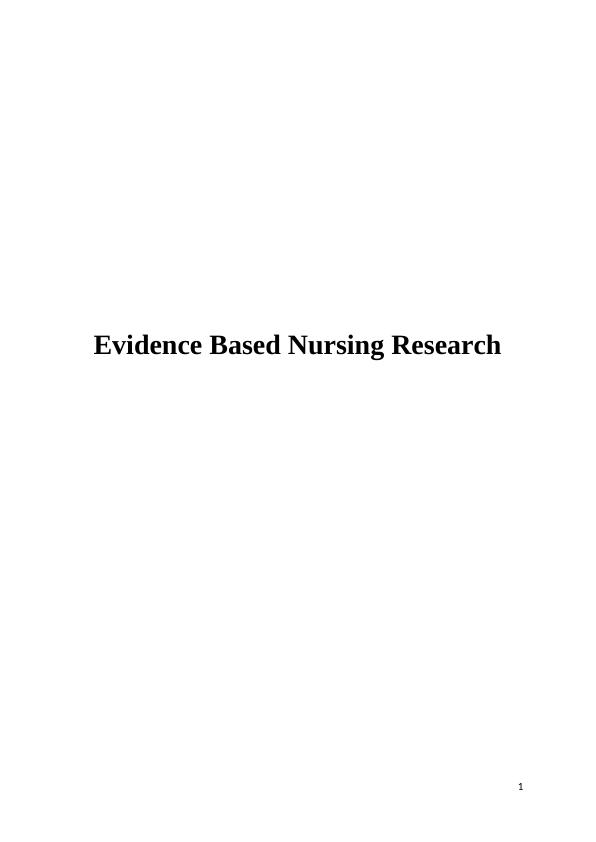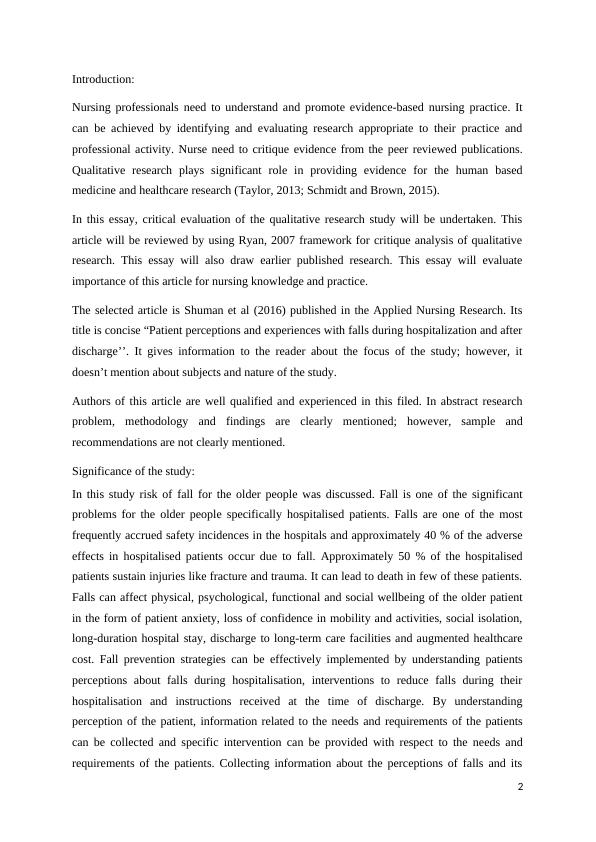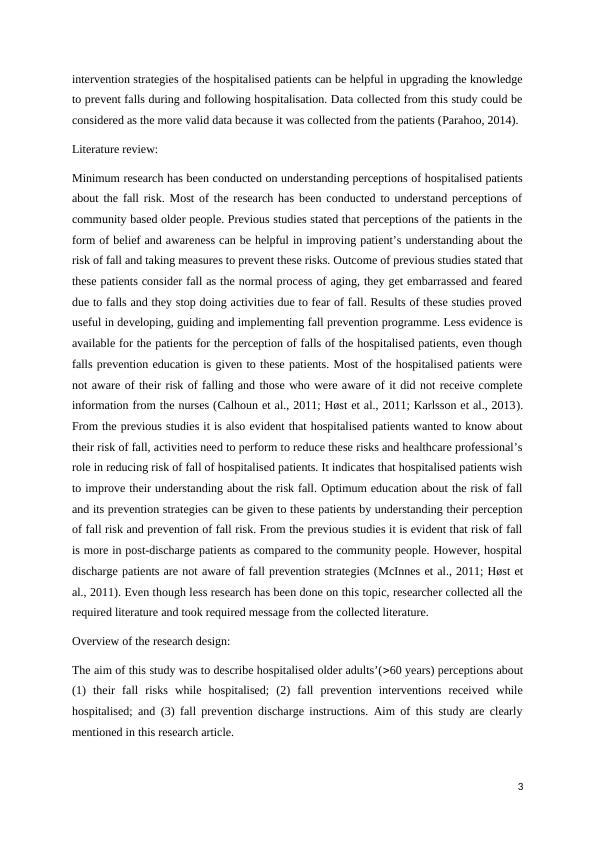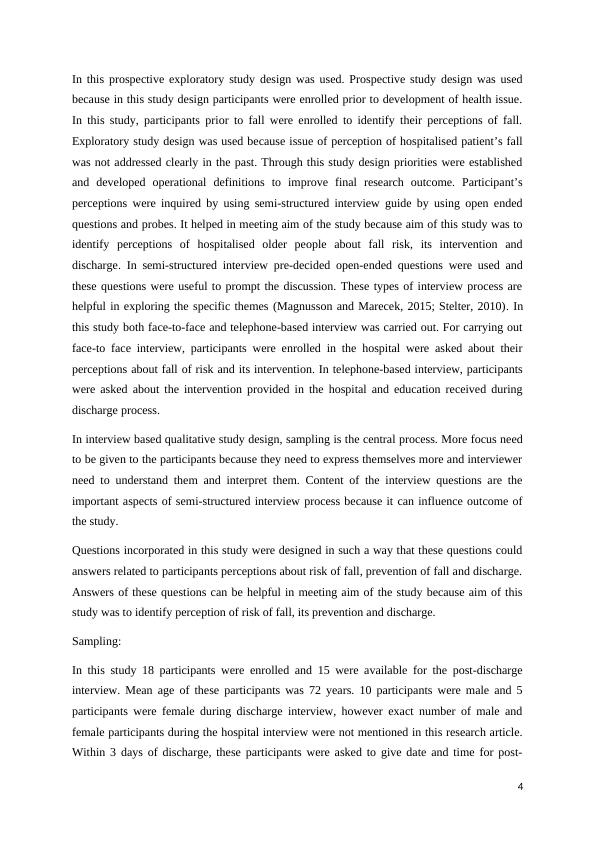Critical Evaluation of Qualitative Research Study on Patient Perceptions and Experiences with Falls during Hospitalization and After Discharge
A guide to critiquing qualitative research studies and understanding the differences between qualitative and quantitative research approaches.
12 Pages4700 Words370 Views
Added on 2023-06-13
About This Document
This essay critically evaluates a qualitative research study on patient perceptions and experiences with falls during hospitalization and after discharge. The study aims to identify perceptions of hospitalised older people about fall risk, its intervention and discharge. The article is reviewed using Ryan, 2007 framework for critique analysis of qualitative research.
Critical Evaluation of Qualitative Research Study on Patient Perceptions and Experiences with Falls during Hospitalization and After Discharge
A guide to critiquing qualitative research studies and understanding the differences between qualitative and quantitative research approaches.
Added on 2023-06-13
ShareRelated Documents
End of preview
Want to access all the pages? Upload your documents or become a member.
Interpretation and Critique of Research Findings
|18
|4763
|154
Step By Step Nursing Research Critique
|18
|5037
|383
Barriers and Facilitators to Nurses' Practice in Assessing and Managing Pain for Older Hospitalized Patients: A Summary Analysis of Four Primary Research Articles
|7
|3499
|107
Clinical Governance and Practice Improvement
|12
|2516
|260
The Royal Commission into Aged Care (2021) published the Final Report
|10
|2710
|10
401168 Evidence Based Nursing Research - Assignment
|13
|3257
|465




